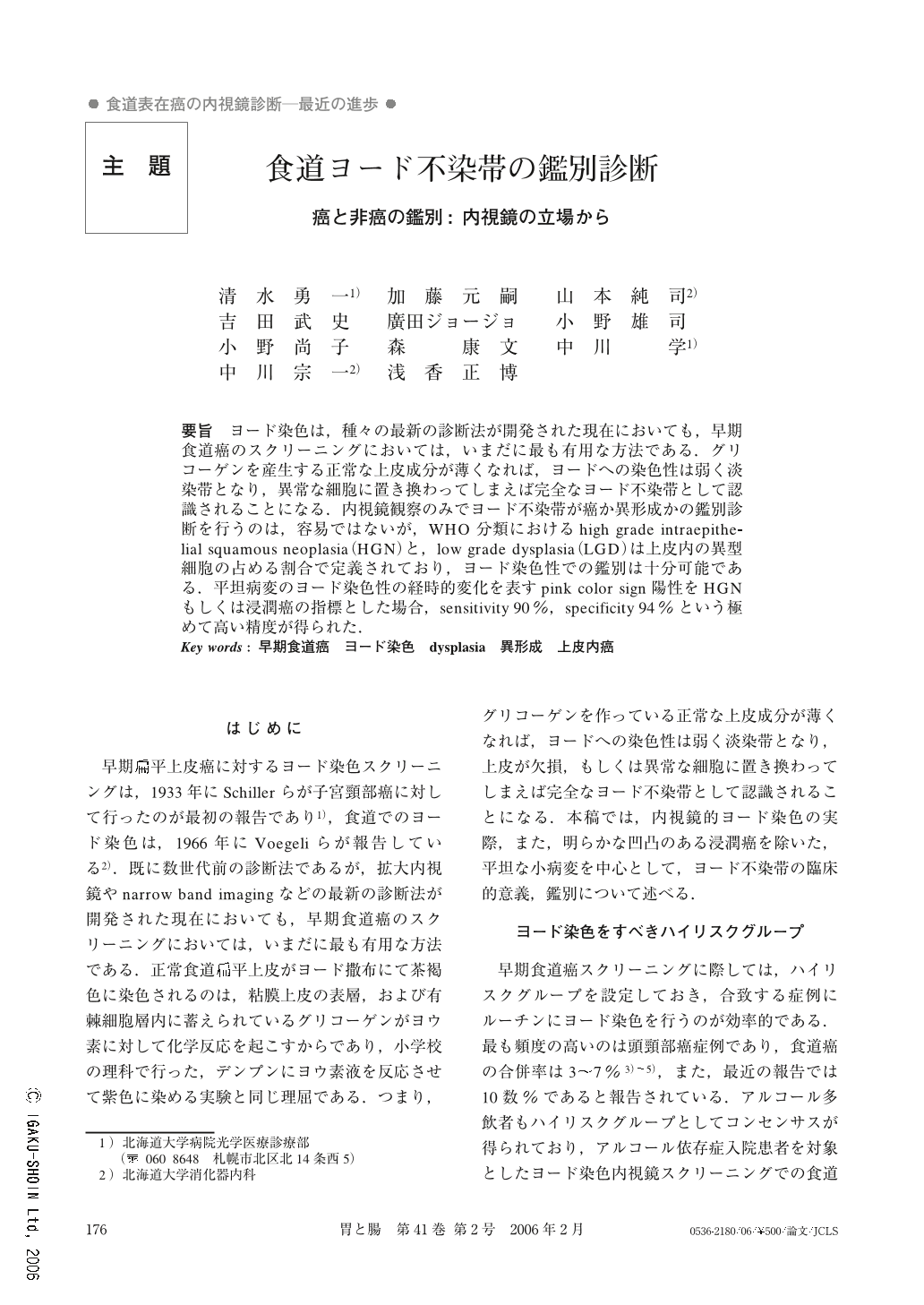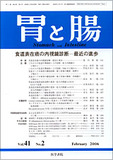Japanese
English
- 有料閲覧
- Abstract 文献概要
- 1ページ目 Look Inside
- 参考文献 Reference
- サイト内被引用 Cited by
要旨 ヨード染色は,種々の最新の診断法が開発された現在においても,早期食道癌のスクリーニングにおいては,いまだに最も有用な方法である.グリコーゲンを産生する正常な上皮成分が薄くなれば,ヨードへの染色性は弱く淡染帯となり,異常な細胞に置き換わってしまえば完全なヨード不染帯として認識されることになる.内視鏡観察のみでヨード不染帯が癌か異形成かの鑑別診断を行うのは,容易ではないが,WHO分類におけるhigh grade intraepithelial squamous neoplasia(HGN)と,low grade dysplasia(LGD)は上皮内の異型細胞の占める割合で定義されており,ヨード染色性での鑑別は十分可能である.平坦病変のヨード染色性の経時的変化を表すpink color sign陽性をHGNもしくは浸潤癌の指標とした場合,sensitivity 90%,specificity 94%という極めて高い精度が得られた.
The ability to detect early squamous neoplasia of the esophagus can be enhanced considerably by iodine staining during endoscopic examination. Endoscopic screening with iodine staining for high-risk populations is recommended in order to detect early squamous lesions of the esophagus. High-risk populations have been reported to be men who are heavy smokers and heavy drinkers and patients with other current or prior primary cancers. The normal epithelium is stained by iodine, which interacts with glycogen present in the tissue. Carcinomas containing no glycogen remain unstained and are thus clearly demarcated from the surrounding normal mucosa. According to the WHO classification, intraepithelial squamous neoplasia is graded as high-grade (HGN) when both architectural and cytological abnormalities occur in the upper half of the epithelium, so HGN will be observed as an iodine unstained area with pink color. By using the pink color sign as an index of HGN or invasive squamouc cell carcinoma for iodine unstained flat lesions of the esophagus, we were able to obtain good diagnostic results (sensitivity 90%, specificity 94%). The pink color sign is useful especially in patients with esophageal mucosa showing many minute iodine unstained areas (scattered type).

Copyright © 2006, Igaku-Shoin Ltd. All rights reserved.


